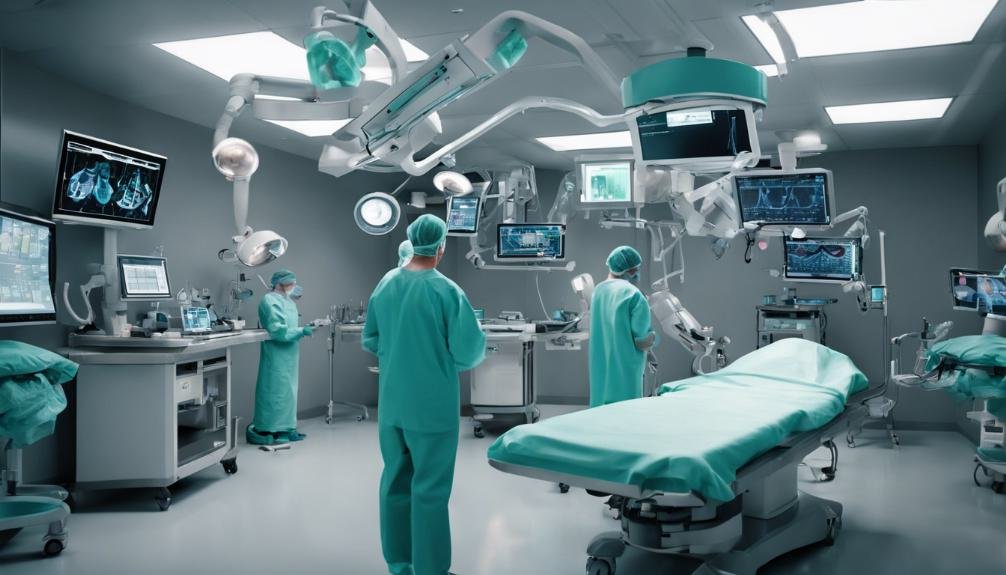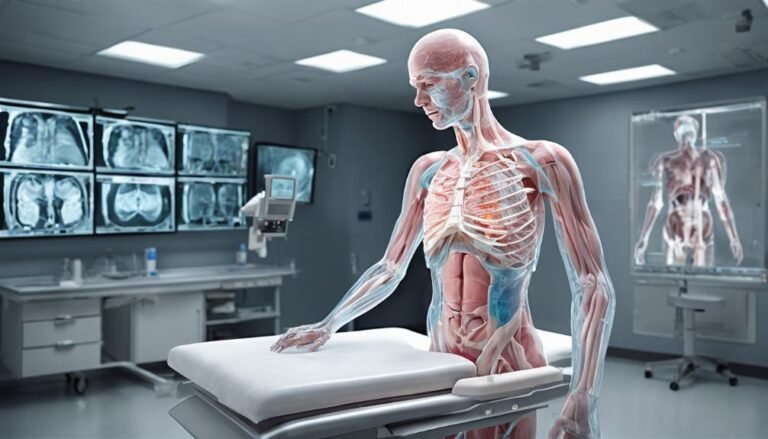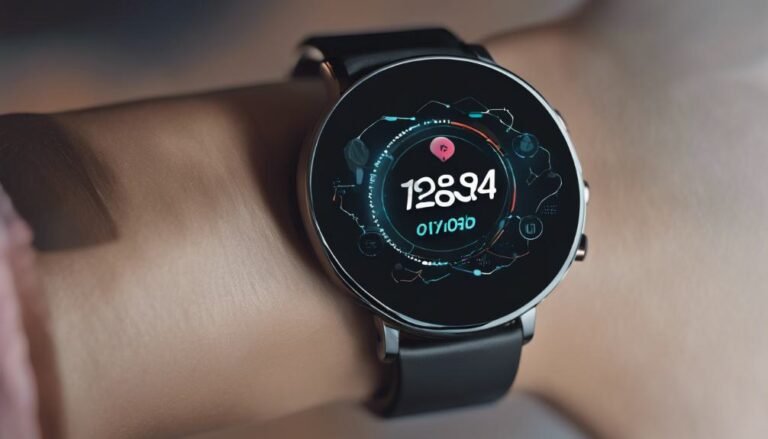AI in Cardiovascular Surgery
Venturing into the intricate pathways of cardiovascular surgery, AI serves as the compass guiding surgeons through uncharted territories with unparalleled precision and insight. From predictive analytics to real-time data integration, AI has redefined the landscape of cardiovascular procedures. As you explore the domain where human expertise meets artificial intelligence, you'll discover how these innovative technologies are reshaping the future of cardiovascular surgery, paving the way for enhanced patient outcomes and optimized care.
Key Takeaways
- AI optimizes preoperative planning for personalized surgical strategies.
- Real-time data integration and augmented reality enhance intraoperative guidance.
- Remote monitoring post-surgery tracks patient progress for early complication detection.
- AI enhances surgical precision through data analysis and real-time insights.
- Ethical considerations, validation, and future directions are pivotal in AI adoption for cardiovascular surgery.
AI-driven Preoperative Planning
How can artificial intelligence enhance the precision and efficiency of preoperative planning in cardiovascular surgery?
Surgical precision in cardiovascular procedures is critical for patient outcomes. AI-driven preoperative planning utilizes predictive analytics to analyze patient data, such as imaging scans and medical history, to create personalized surgical strategies.
By integrating virtual simulation technology, surgeons can visualize the patient's anatomy in a dynamic 3D environment, allowing for detailed procedural planning before entering the operating room. This virtual simulation enables the identification of potential challenges and helps optimize the surgical approach, contributing to enhanced surgical precision.
Moreover, AI algorithms can process vast amounts of data to predict potential complications and suggest personalized interventions, improving patient outcomes.
The use of AI in preoperative planning not only enhances surgical precision but also increases procedural efficiency by streamlining the workflow and reducing surgical time. Leveraging predictive analytics and virtual simulation in preoperative planning sets the stage for successful cardiovascular surgeries with optimized outcomes.
Enhanced Intraoperative Guidance
Utilize real-time data integration and augmented reality technology to provide enhanced intraoperative guidance for cardiovascular surgeons. This advanced system offers real-time assistance by integrating patient-specific data, such as imaging scans and preoperative plans, into the surgeon's field of view during the procedure. By combining these sources of information, the system enables precise navigation through complex cardiac structures, aiding in accurate incisions and best device placements.
Through augmented reality overlays, the surgeon can visualize critical structures, like coronary arteries or heart valves, in relation to the patient's anatomy in real time. This feature enhances spatial awareness and facilitates decision-making during intricate surgical maneuvers.
Additionally, the system can project virtual markers indicating target areas or potential risks, further improving precise navigation within the surgical field.
Postoperative Care Optimization
Enhance patient outcomes through the optimization of postoperative care following cardiovascular surgeries. One way to achieve this is by implementing remote monitoring systems that allow healthcare providers to track patients' progress outside the hospital setting. These systems enable continuous monitoring of essential signs, such as heart rate and blood pressure, alerting medical staff to any concerning trends promptly. By utilizing remote monitoring, potential complications can be identified early, leading to timely interventions and improved recovery outcomes.
Additionally, personalized rehabilitation programs play an important role in postoperative care optimization. Tailored rehabilitation plans take into account each patient's unique needs, including factors like age, comorbidities, and the specific type of cardiovascular surgery performed. These programs encompass a range of interventions, such as physical therapy, dietary counseling, and mental health support, all designed to promote a faster and more effective recovery.
AI's Impact on Surgical Outcomes
To improve surgical outcomes in cardiovascular procedures, AI technologies are revolutionizing the way surgeries are planned and executed. By harnessing technology advancements and data analysis, AI is enhancing surgical precision and ultimately leading to better patient outcomes.
AI algorithms can analyze vast amounts of patient data, including medical history, imaging scans, and real-time physiological data, to assist surgeons in making more informed decisions during procedures.
Through real-time monitoring and analysis, AI systems can provide valuable insights to surgeons, alerting them to potential complications or variations from the norm. This proactive approach enables surgeons to adjust their techniques promptly, leading to more successful outcomes for patients undergoing cardiovascular surgeries.
Additionally, AI-powered robotic systems can enhance surgical precision by performing complex tasks with accuracy and consistency that surpass human capabilities.
Challenges and Future Directions
Addressing the increasing complexity of integrating AI technologies into cardiovascular surgery requires overcoming various challenges and strategic planning for future advancements. Ethical considerations play an important role in the adoption of AI in surgery. Ensuring patient data privacy, transparency in AI decision-making processes, and maintaining the human touch in surgical care are paramount.
Technological advancements are continuously shaping the landscape of AI in cardiovascular surgery. From enhancing imaging techniques to improving surgical robots' precision, these advancements are propelling the field forward.
One of the significant challenges is the need for robust validation and regulatory frameworks for AI algorithms in surgery. Ensuring the safety and effectiveness of these algorithms is vital for widespread adoption. Additionally, the integration of AI into surgical workflows without disrupting existing practices poses a challenge that needs to be addressed.
Future directions in AI for cardiovascular surgery include developing AI systems that can provide real-time guidance during procedures, personalized treatment plans based on patient-specific data, and fostering interdisciplinary collaborations to drive innovation in the field. By overcoming these challenges and leveraging technological advancements, the future of AI in cardiovascular surgery looks promising.
Conclusion
As AI continues to revolutionize cardiovascular surgery, the possibilities for improved patient outcomes and surgical precision are endless.
With ongoing advancements in predictive analytics, virtual simulation, and real-time data integration, the future of cardiac surgery is brighter than ever.
Stay tuned for the latest developments in AI technology, as the next breakthrough in cardiovascular surgery may be just around the corner.
The future holds exciting potential for the intersection of artificial intelligence and surgical innovation.







